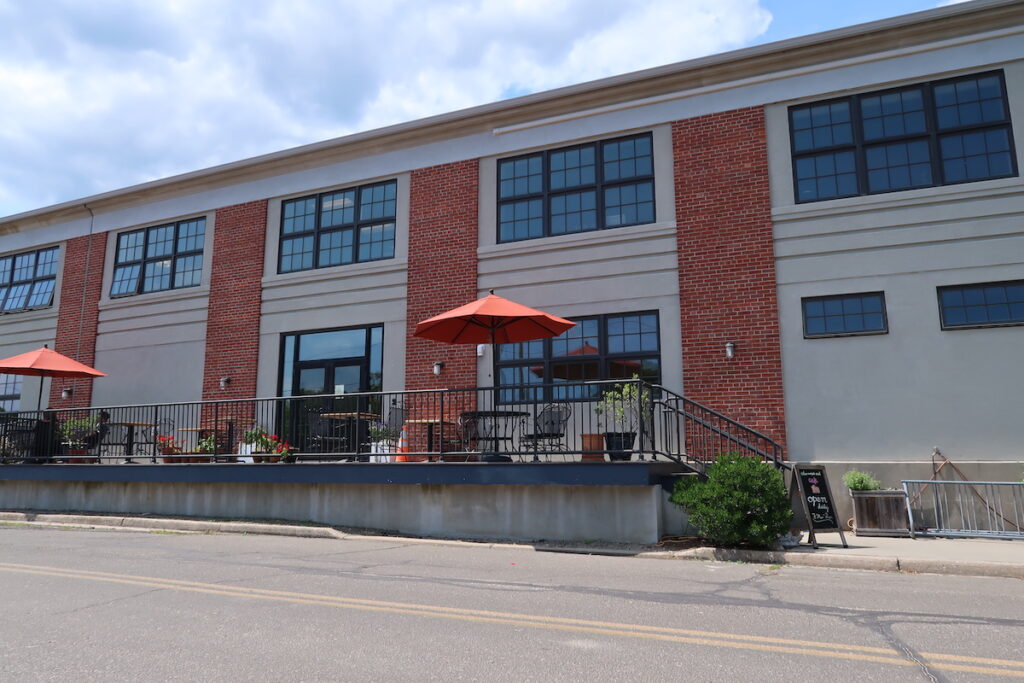Southold weighs new reconstruction project definitions

Builders and attorneys remained concerned about Southold’s proposed new definition of a tear-down after a meeting Wednesday night with the Town Board’s code committee to discuss potential code changes.
The town has no official definition of a tear-down — the term for replacing an old structure with a new building on the same site — and was looking to clarify the code by spelling out the difference between alterations, demolitions, enlargements and reconstructions.
Town officials have long claimed some builders completely remove and then replace homes, but call them renovations rather than demolitions since rules regulating renovations are less strict.
“We’re trying to keep it simple. We put in a definition where we needed a definition,” chief building inspector Mike Verity told a group of builders, environmental consultants, architects and attorneys at last Wednesday’s meeting.
Critics of the move expressed concern that the new definitions could make it impossible to rebuild some houses, particularly those currently within 100 feet of wetlands and so under the Town Trustees’ jurisdiction.
“This isn’t going to change your life,” Mr. Verity said, trying to assuage those fears. “You’re overthinking this way too much.”
Environmental consultant Bruce Anderson said he’s in favor of the changes, but he thinks the definitions should be carried over to the wetlands code so the Trustees are working in concert with other regulatory boards.
“Make it consistent with both codes,” he said. “We’re walking down the same road together, the Zoning Board and Trustees. Doing this in a vacuum hurts us.”
Town attorney Martin Finnegan said the definitions are not in the wetlands code because it is not the Trustees’ job to decide whether a project is a demolition or renovation. That decision, he said, should be made by the building inspectors.
Many in the audience seemed confused by the new definition of demolition, which is the removal of any portion of a structure with a replacement cost more than 50 percent of the current replacement cost of the home. Some construed that definition to mean that they would be required to tear down the entire house after they tore down a section that met that criteria.
That’s not the case, officials said.
“It’s what’s the current value of the structure and how much of that is being removed,” said Town Supervisor Scott Russell. “It’s a baseline standard that we didn’t invent.”
Mr. Russell said the Federal Emergency Management Agency uses the same definition of a demolition.
“I don’t believe any of you guys have been through this building process,” said builder Eugene Burger. “People pay a lot of money for waterfront houses, which by a very loose code could be eliminated.”
Mr. Burger said that if a house is closer than 100 feet to wetlands, the Trustees could require a project defined as a demolition under the new language to be moved back 100 feet from the wetlands, even if the entire house is not demolished. In some cases, he said, forcing a 100-foot setback could eliminate the entire building envelope on a waterfront lot, rendering an extremely expensive property useless to its owner.
“We want you to feel the pain that we go through at all these meetings representing our clients,” he said. “You have no understanding of that. I’ve watched people freaking cry in front of the Trustees.”
Trustee president Jill Doherty said her board does have discretion in determining whether to make someone move their house.
“If it’s not a demolition, we’re not going to make the applicant move it back,” she said. “If you say it’s a demolition and it’s 50 percent but the whole structure is not coming down, it’s really not a demolition the way we’re thinking about it.
“We wouldn’t have asked them to move it back if it would have triggered ZBA review,” she added. “We’re not going to make the applicant go to another board just to move it back 10 feet.”
Attorney Patricia Moore said she’s concerned since many houses in Southold do not meet the current code. Those are called pre-existing, non-conforming structures. She said they should be given the right to remain.
Mr. Verity said they are already given that right under the code’s pre-existing, non-conforming section.
“The hardship is by people who try to game the process,” said Mr. Russell. “A simple, honest discussion can get you through this process easily. It’s the gamesmanship that we’re trying to put an end to.”
Mr. Russell added that when he was town assessor, he inspected houses that had permits for renovations, but the whole house was rebuilt without being reassessed at its new value.
“Some people in this audience represented those people,” he said. “It doesn’t matter how the building disappeared, it disappeared and it’s a tear-down … Some of you might prefer a gray area because you might want to poke holes in the application process. We’re not going to have that anymore.”
He said he was, however, open to discussion on whether a different definition of tear-down should be used, perhaps one that made the cutoff higher than 50 percent.
“Is removal of 50 percent of a structure too stringent?” he asked. “I’ll deal with that, but it has nothing to do with the Trustees.”
“If we had no definitions at all, we could sit in this room and argue about every single thing,” said Mr. Verity.
“We owe the public and other professionals a very good explanation as to what this means,” said Zoning Board chairwoman Leslie Weismann, who was in the audience.
The board members agreed to set up another meeting to discuss the code changes and to withdraw the public hearing on the law as is currently drafted from the Dec. 6 Town Board schedule.








